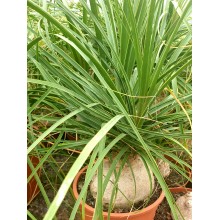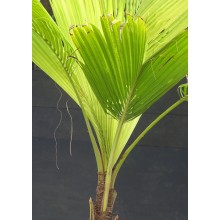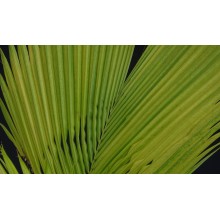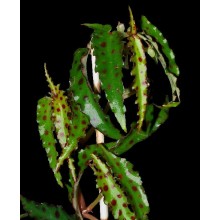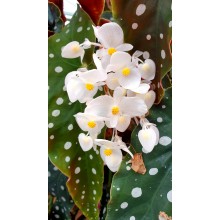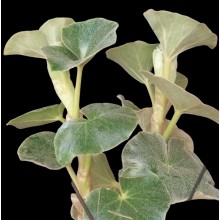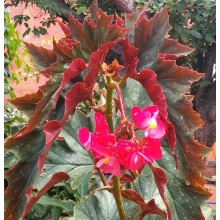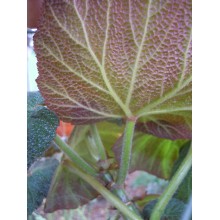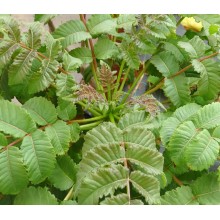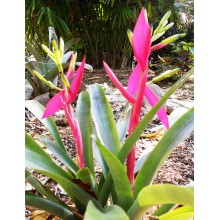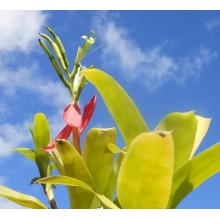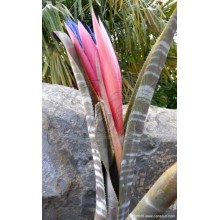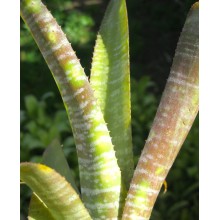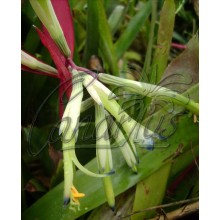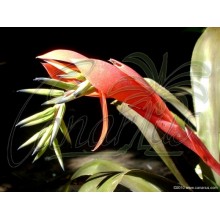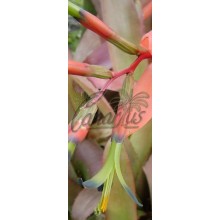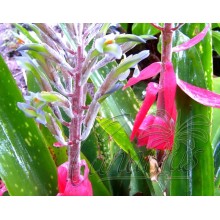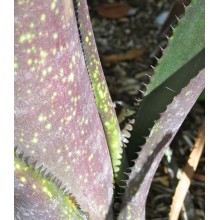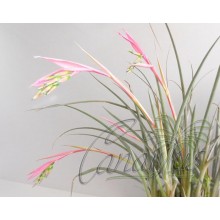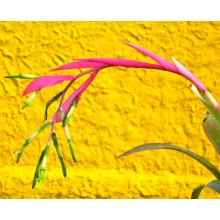General Plants There are 1884 products.

If you like exotic plants, you just came to the right place. Canarius offers the hard-to-find exotic plants which are seldom available in garden centres. Our shop has natural species as well as rare hybrids. We offer exotic plants from the Canary Islands.
Orders are sent to anywhere in Europe and also worldwide. Parcels will reach your home in a few days after shipping (but we also need some days for processing). Feel free to contact us if you have any questions.
Subcategories
-
Succulents
World deserts and dry areas are home to the most interesting plants. Canarius offers an increasing selection of succulent plants of maximum quality, because they are grown outdoors, under the full sun of the Canary Islands.
Succulents or "fat plants" are water-retaining species, adapted to dry conditions. They store succum (juice, water) in their leaves, stems or roots, and often show a stout and fleshy appearance.
-
Exotics
Exotic plants are species from other parts of the world, and they usually have ornamental qualities: a lush foliage, colorful flowers, unusual shapes... Here you can find a great variety of exotic plants: from Bromeliads and Heliconias, to pamls and houseplants.
Exotic plants do not have a particular use. Collectors buy this kind of plants for their rarity, for indoor or outdoor decoration, depending on their features.
-
Fruit, Herbs & Medicinals
Fruit, Herbs & Medicinal plants are focused on getting a better health. In this section, each type of plant produce healthy effects, both fruit trees (Feijoa, Pineapple, Fina de Jete...) and plants for health, such as Graviola, Aloe vera, Callisia fragrans...
In the normal metabolism of all living beings, the organism produces some substances from nutrients latent in the environment; some of these chemicals are part of the process in all (or almost) sort of species. Normally, the useful compounds are concentrated in some of its parts: leaves, seeds, flowers...
Find out your advisable plant and buy it online!
-
Special
On canarius.com we try to remove limits in the field of botany. On our online store we try to facilitate the purchase/sale of plants to anywhere in the world. That's why, we grow from the most common species to the most special plants, as we can see in this section.
-
Beaucarnea recurvata
Beaucarnea recurvata
Classic ornamental plant with a perfectly rounded stem during its youth.
23,40 € -
Beccariophoenix fenestralis
Beccariophoenix fenestralis
Beccariophoenix fenestralis is a spectacular, massive and rare Coconut relative from Magagascar.It is an imposing palm tree that is is cultivable in tropical and humid subtropical climate regions, in full sun and on rich soils, preferably sandy, acidic or neutral, where it grows quickly and vigorously.We offer a 60 cm high plant.
92,00 € -
Beccariophoenix fenestralis Large
Beccariophoenix fenestralis Large
Beccariophoenix fenestralis is a spectacular, massive and rare Coconut relative from Magagascar.It is an imposing palm tree that is is cultivable in tropical and humid subtropical climate regions, in full sun and on rich soils, preferably sandy, acidic or neutral, where it grows quickly and vigorously.We offer a 100 cm high plant.
132,00 € -
Begonia amphioxus
Begonia amphioxus
This small and showybegonia is native to Sabah in Borneo. Leaves are peltate and pointed at both ends. They are bright green, dotted with red-burgundy spots. It was described in 1990 and it rather easy to grow.
18,70 € -
Begonia maculata 'Wightii'
Begonia maculata 'Wightii'
What a beauty! This plant came out of the brazilian forests, and it soon became one of the most sought after indoor plants. According to begonia experts, this a "Spotted-leaf angel-wing cane-type begonia" and indeed the wings are dotted with silver circles.
14,70 € -
Begonia venosa
Begonia venosa
Begonia venosa is a shrubby species. Between 60 and 90 cm tall, it grows forming large solid and branched stems, covered with large translucent stipules with red veins. Its leaves have whitish-silver dots and it produces white flowers.
24,80 € -
Begonia x 'Sophie Cecile'
Begonia x 'Sophie Cecile'
This large-sized hybrid is one of the most spectacular of the group of hybrids known as "cane begonias" or "angel leaves". 'Sophie Cecile' has a tall, robust, upright habit, growing as a tight clump of bamboo with very elegant olive-green leaves with silvery spots and burgundy underleaves.
28,30 € -
Begonia x Art Hodes
Begonia x Art Hodes
Beautiful rounded "crispy" leaves, with incredibly rugged blades. The leaves of this South American hybrid Begonia are dark green above and pink-red below.
11,20 € -
Beiselia mexicana
Beiselia mexicana
This small tree belongs to the Bursera family, the same of mhyrr, copal and frankincense. Beiselia belongs to its own plant genus, because it is quite different from its relatives. It is a very attractive and "weird" plant.
64,30 € -
Billbergia amoena var. stolonifera
Billbergia amoena var. stolonifera
This variety develops new rosettes on stolons, usually 20-30 cm long, so the plant eventually creeps or climbs or simply spreads in the air. It was collected for the first time in 1981 in the coastal area of Buzios, in Rio de Janeiro.
17,40 € -
Billbergia brasiliensis
Billbergia brasiliensis
Exotic tube-like billbergia, with silver banded stiff leaves. Even when not in flower, this plant is very striking. Showy pink-blue inflorescences in late spring.
17,50 € -
Billbergia distachya
Billbergia distachya
Subtropical bromeliad, from SE Brazil. Known from the cool hills of Santa Catarina, it usually blooms twice a year. It is easy to grow, fast, and tolerates a wide range of conditions, including some frost.
13,30 € -
Billbergia distachya var. rubra
Billbergia distachya var. rubra
A more appealing type of B.distachya. This is a much larger plant with wider reddish bracts and also has a reddish hue on the leaves. It is hardy to light frost, just as the type species.
13,30 € -
Billbergia elegans
Billbergia elegans
Small elegant bromeliad with green-pink leaves forming a tube-like rosette. It flowers profusely and the whole plant turns pink during the cooler, blooming months.
25,80 € -
Billbergia macrocalyx
Billbergia macrocalyx
Billbergia macrocalyx is a tall tube-like billbergia, up to 1 m tall. White spots on pale green leaves and spectacular inflorescence in fall.
17,60 € -
Billbergia magnifica
Billbergia magnifica
Large, tall, showy tube-like billbergia from Brazil and Paraguay. It is a stately bromeliad, spectacular in all its parts. Leaves are densely banded and spotted and turn dark purple in full sun. Blooms are... oh my ! Just too beautiful!
23,60 € -
Billbergia nutans var. minor 'Iguazu'
Billbergia nutans var. minor 'Iguazu'
This is a wild-collected clone of an uncommon frost-hardy bromeliad, which is suitable to temperate to cool-tropical conditions. It has beautiful arching silvery leaves, finely toothed and forms tight clumps , bearing delicate flowers with showy pink bracts.
19,80 € -
Billbergia nutans var. schimperiana
Billbergia nutans var. schimperiana
Wide-leaved variety of the popular cold-resitant Billbergia nutans. It is just as easy as the type species but the plant has a lushier, more exotic look.
21,00 €
At the moment there are few products in this category General Plants




















